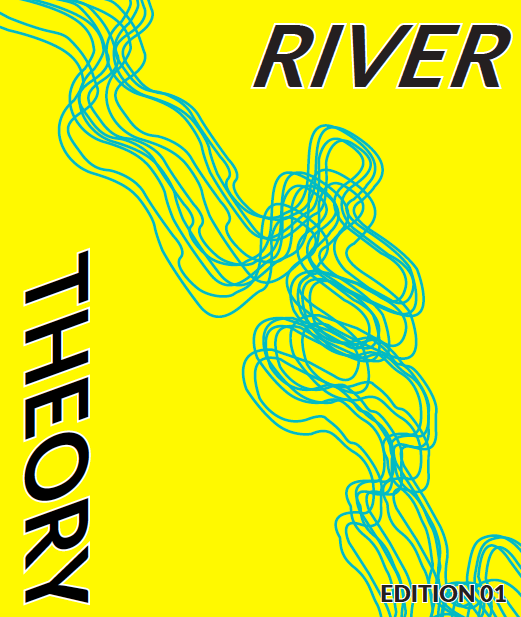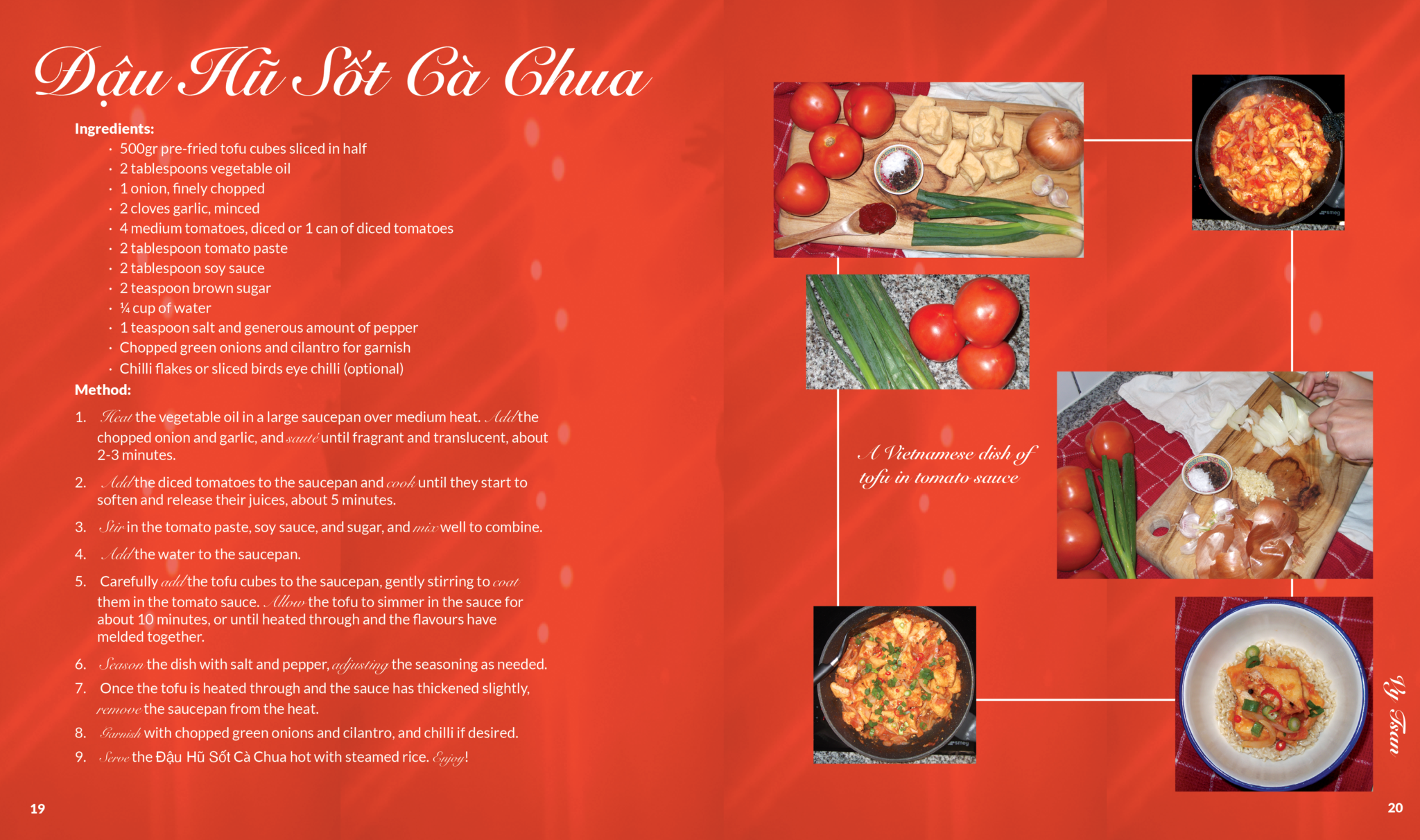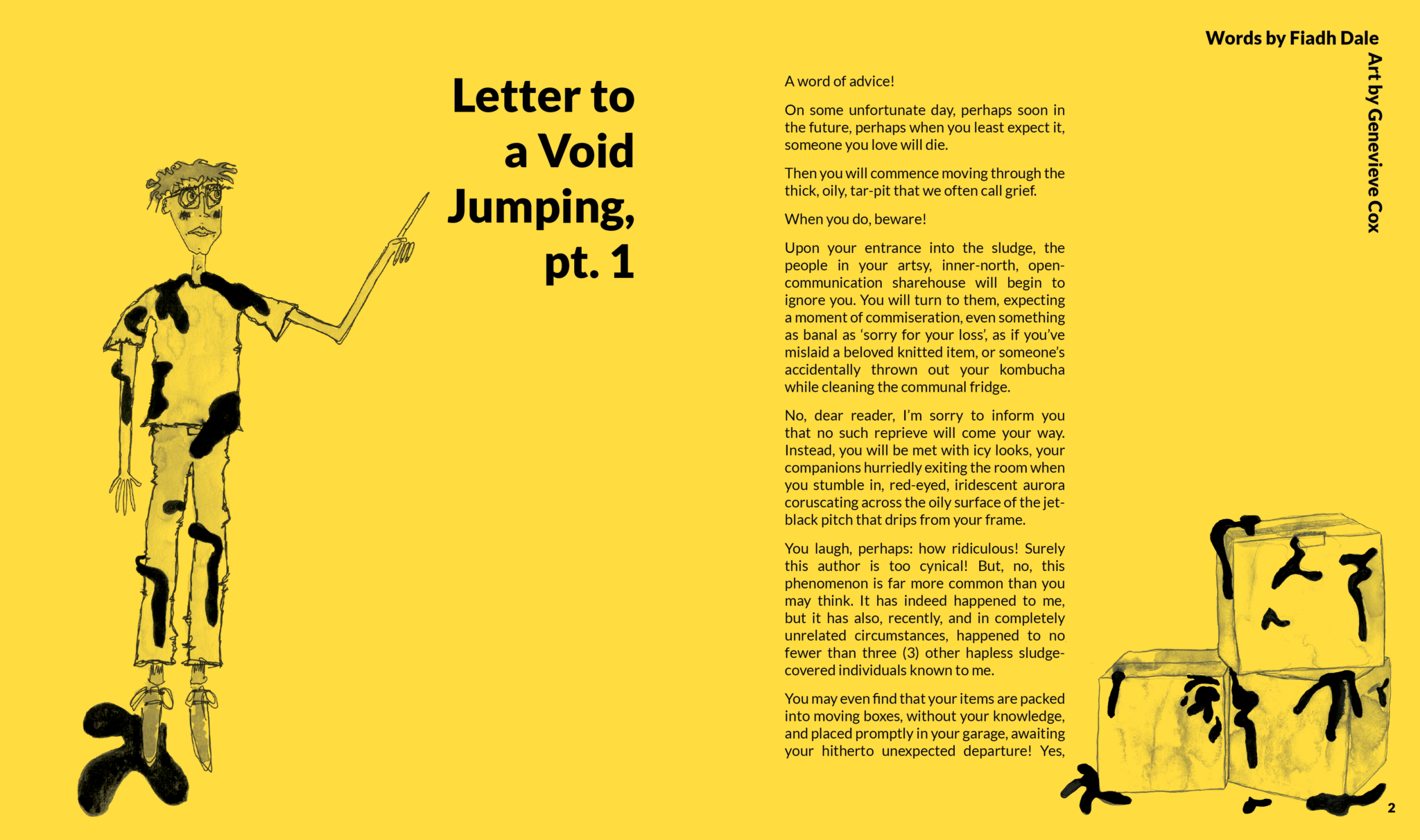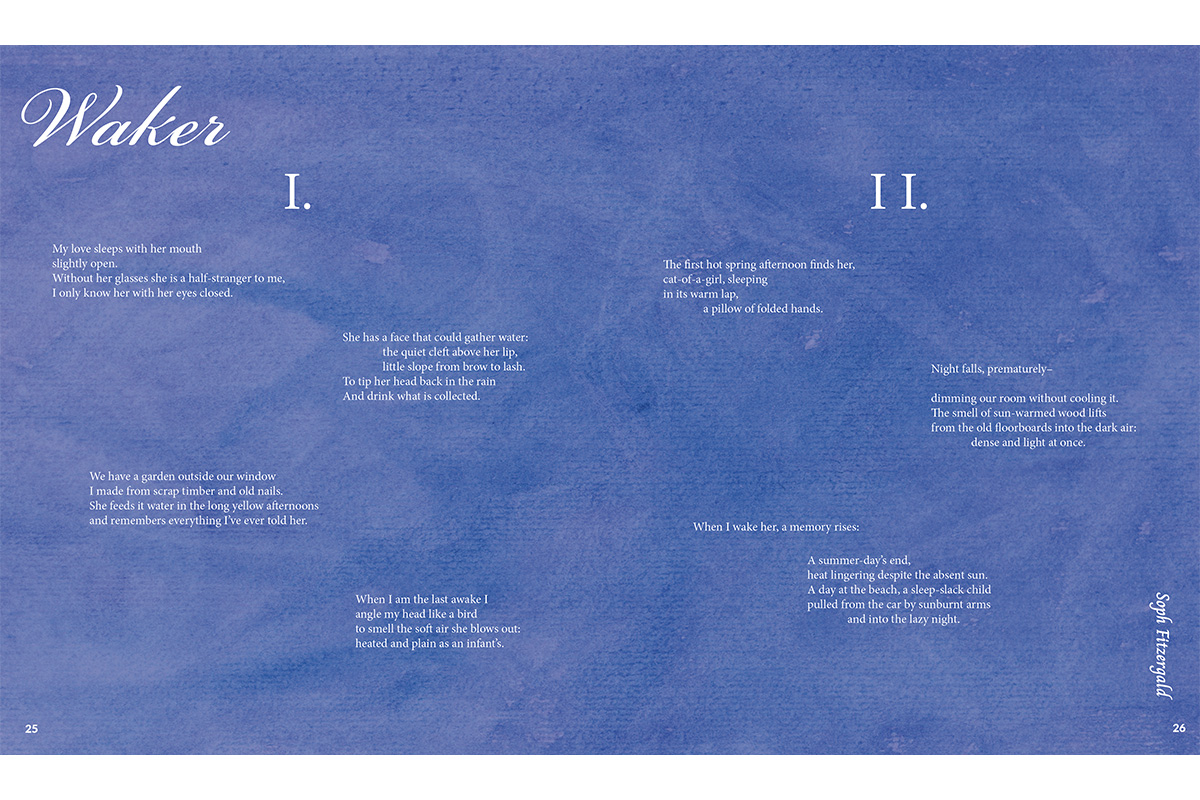River Theory is a new arts magazine, created by UNSW student Hannah Vlies Lawrence and ANU alum Tilda Njoo, coming out later this week. Honi, in its pursuit of understanding the burgeoning publication world, sat down with the two creators to uncover how River Theory came to be.*
I want to start from the very beginning. What first inspired you to make a magazine? Has it been in the works for a while?
In January this year, the two of us went on a camping trip to Yuin Country, near Braidwood. We spent the first day in the Shoalhaven River, getting sunburnt and cooking lunch on the riverbank. In the afternoon we were lying, half in the water, on some rocks and talking about what we wanted from the year. We imagined editing a magazine together, with relationality, queerness and sentimentality at its core, but would have to publish it before we both left to go overseas in the middle of the year. Neither of us thought it would materialise given the short span of time we had, but after returning home we had one meeting and then another, then we had contributors involved and before long it was at the printers. Honestly everytime we hit a deadline successfully was a shock.
Creating the mag together, as co-editors, was really motivating given the richness of our friendship. We have been reading and editing each other’s work (and personal lives) for over a decade now and probably trust each other more than anyone else. Because we live 300 kms away from each other, we wanted any excuse to work closely together on a shared project.
Why a magazine? What do you think the print form offered that other mediums didn’t?
From the beginning, we knew that River Theory had to be a print magazine. We had been so inspired by other print publications, and loved that they provided a way to engage with a specific, contemporary moment in time, without being necessarily tied to technology and social media. Reading magazines written by your peers feels like the best way to slow down whilst still keeping your finger on the pulse.
Print media also offers a physical language that digital media cannot. We were excited about the prospect of our readers touching the pages of the magazine, carrying it in their bag and putting it on their bookshelves. Given our focus on collaboration, having everything compiled and bound was a really important visual manifestation of the project itself.

I want to ask about your campus experience. You’ve both been involved in creative societies and various publications. Has your participation in these organisations helped or inspired your practice? If so, how?
Hannah has written for PULP and Honi Soit and Tilda has edited ANU’s publication Woroni, and co-founded an art school publication, Chiaro. But beyond writing and editing, it feels like we have been immersed in these circles, where everyone is constantly creating and collaborating. A huge part of our vision was about the project itself, creating a space of collaboration, trust and creativity for our peers. Uni mags have always provided us a space of autonomy that is hard to find in other publications and we wanted to bring that into our own publication.
The logistical side of publishing a mag ended up being a really important aspect of the project. Working with various editors over the years has been pivotal to understanding the more organisational demands of publishing and how being an editor involves much more than the conceptual.
How did you curate and collate written works, art and photography for the magazine? Edition 01 is a collage of essay, art, photography and fiction … how did you select these?
We found that each of our loved ones has been busy creating and generating their own ideas and art, and we wanted to combine all this into one magazine, which meant including a variety of forms. We certainly have a lot of personal essays, which lends itself nicely to our focuses on queerness, relationality and sentimentality. Curating different forms other than essays was very specific, with us reaching out to our friends who create in these areas for pitches and ideas. In the end, the magazine includes personal essays, art, poetry, a recipe, diary entries and scripts. It feels wonderful to start this long term project off with our nearest and dearest!
How did you strike a balance between these different forms?
We worked very closely with writers and artists workshopping ideas to ensure both their visions, and the overall curation of the magazine were aligned. Because we were pulling so closely from our lives and the communities we make within, pieces seemed to align conceptually with one another very naturally.
Both coming from arts backgrounds, it was also really important to us that we had both art spreads and artists creating work for other pieces within the mag. It was certainly a highlight to work collaboratively with writers, artists and ourselves to focus on aesthetics where most of the editorial process had been concerned with words. It really felt like the magazine grew out of itself rather than being something that was litigiously curated, which has been such a joy!
Magazine making is a collective undertaking. Who helped you, were there any unlikely sources? What kind of inspiration did your contributors give you? What did you learn from the sharing process?
We’ve always thought of River Theory as a project culminating in a magazine rather than just a publication with collectivity at its centre.
Most things that either of us write gets run by one another and we wanted to bring that level of collaboration not just between ourselves as editors and the contributors but also between contributors themselves. Going into it, our contributors knew that they would be paired up with each other to give feedback and ideas. This was a great way for our contributors to get to know each other and the magazine, and feel that they were contributing more than just their words and art. The way that each of our contributors dove into this process was so inspiring!
We learnt so much from our contributors. Around half came from Canberra, and the other half from Sydney, a few from Victoria and one writing from Tucson. Getting to build relationships across the continent and beyond has been a massive highlight of the project for both of us and hopefully for the contributors. On a personal level, it was also great to get to know each other’s lives in this new way as well.
Delving into the publication design … how did you play with layout and layup? What sorts of visual inspiration did you look towards?
Designing a magazine with someone who lives in a different city was challenging! We spent hours on FaceTime holding up drawings and bits of other magazines to the camera, and sending inDesign files back and forth. Our biggest sources of visual inspiration were uni magazines, DIY publications and zines. There is such a great culture of print media to draw from. Early in the process Hannah borrowed a massive stack from a friend (thanks Eloise) and every meeting was spent flicking through and pointing out things we liked and could emulate in our publication.
Place has also been pivotal to the publication design. Given the project came out of a camping trip and river day, we wanted to make sure that the magazine was grounded in the materiality of that day with shots from that trip both beginning and ending the mag and hidden throughout.


Walk us through the title. What does River Theory mean? How did you choose that?
The title River Theory is a reflection on the macro/microcosm of the river. It is a contradiction: a constant presence, but ever changing as it flows past. It is the flowing together of dirt, debris, water, insects, animals and plants from all the way upstream. Each of these comes from somewhere else, but merges with each other to create a new, cohesive reality.
How can this way of being be translated into friendships, into creative relationships? River Theory mag is our attempt to find out.
What else can we expect from the magazine? Where do you see the venture going?
We are launching Edition 01 this Thursday (June 13) at the Different Drummer in Glebe! Come by from 7pm to pick up a copy, listen to readings and get some live drawings from the artists. We are so excited to get to know all the contributors, and for them to get to know each other. It should be a great night!
Beyond the launch, we are already thinking about Edition 02! We would love to see River Theory become a bigger project of queer collaboration and world-building through programming, events and of course more editions.
Follow @rivertheorymag for information on how to buy a copy, and how to submit to contribute to Edition 02.
*The interview has been edited for clarity.





